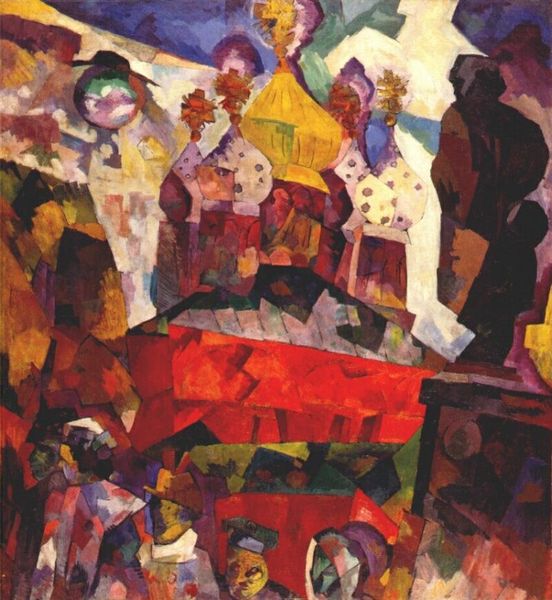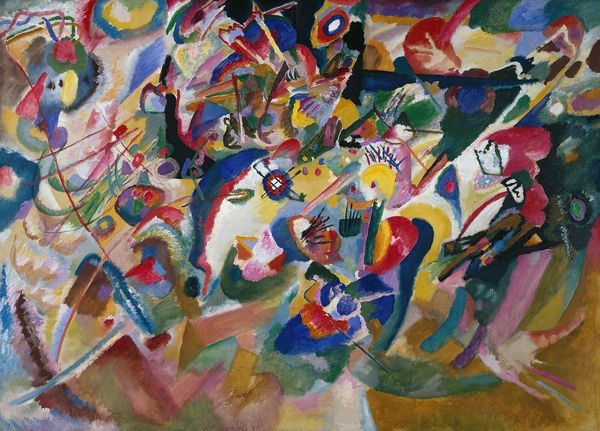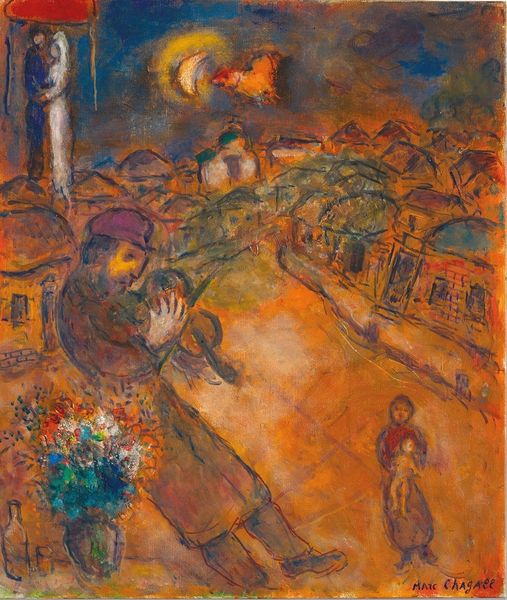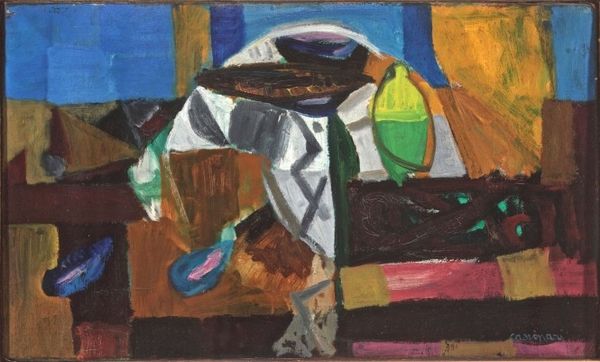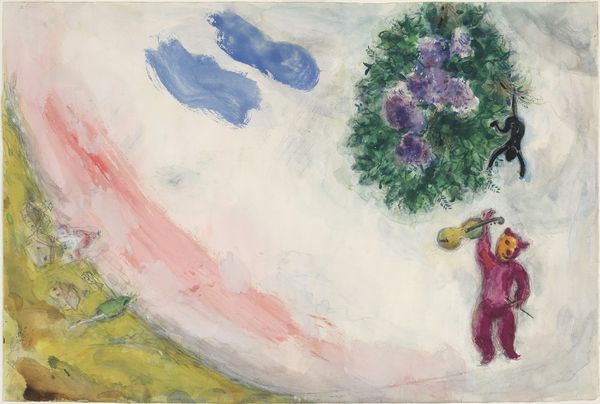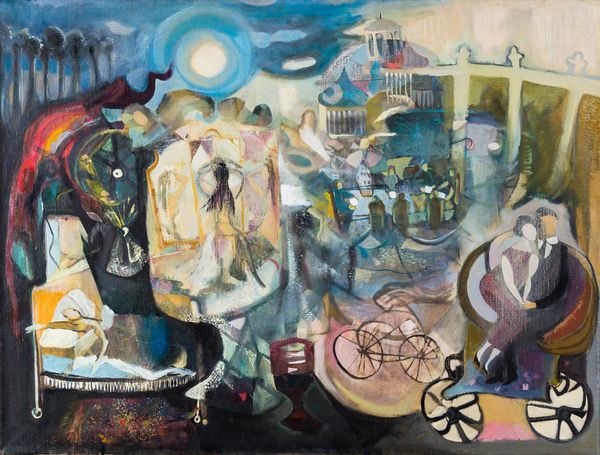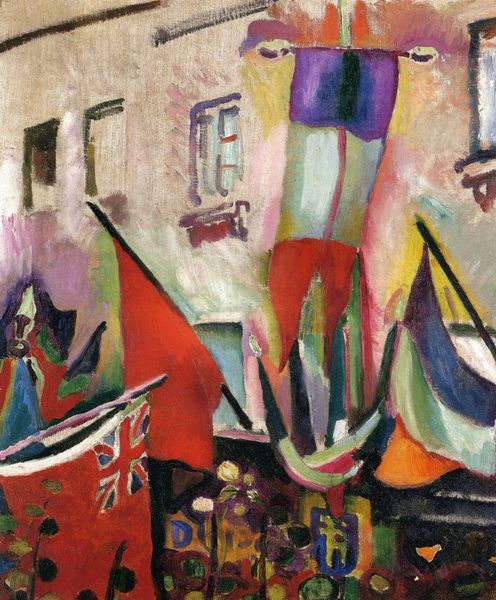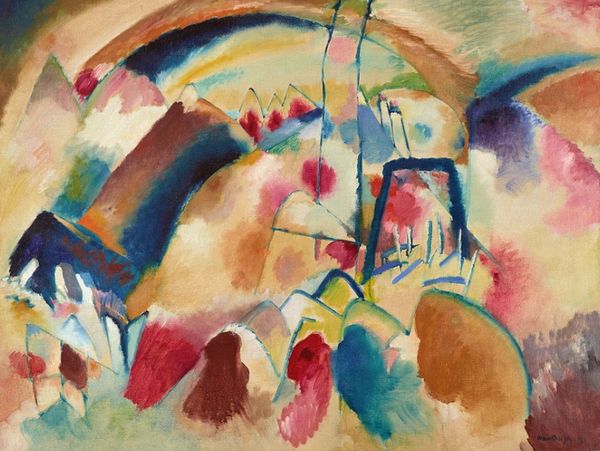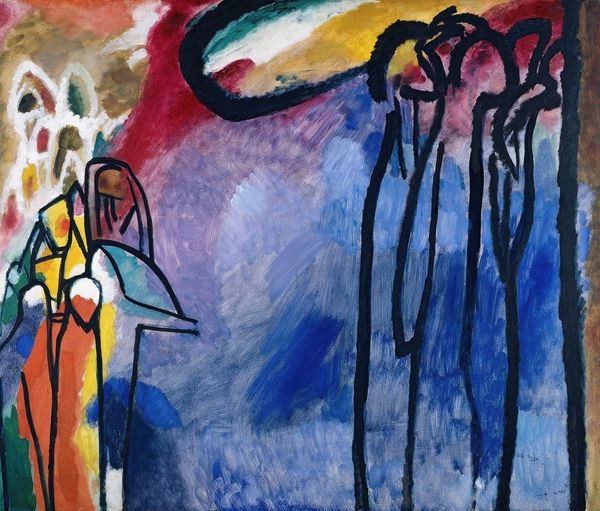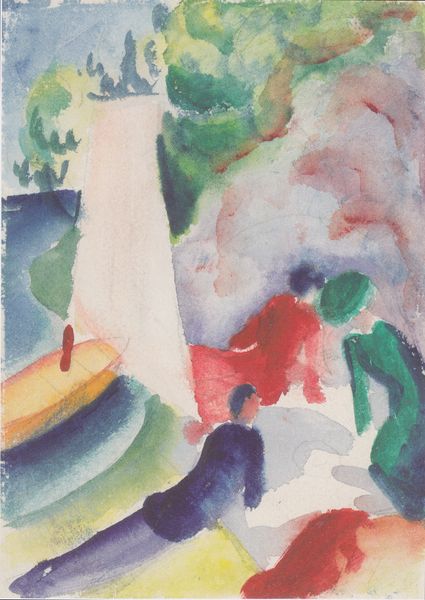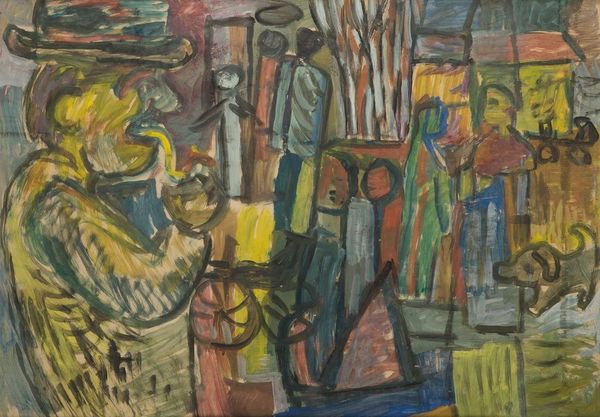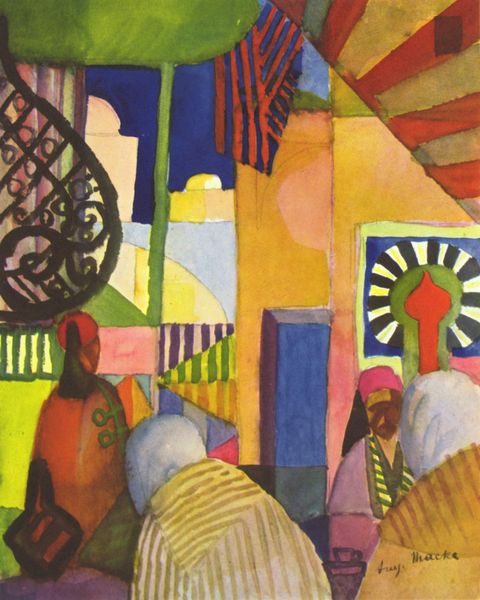
oil-paint
#
portrait
#
figurative
#
art-nouveau
#
abstract painting
#
oil-paint
#
landscape
#
german-expressionism
#
oil painting
#
neo expressionist
#
expressionism
#
abstraction
#
cityscape
#
expressionist
Copyright: Public Domain: Artvee
Kandinsky, likely in the early 20th century, painted ‘Lady in Moscow’ with a spirited use of oil on canvas. It’s a process-driven piece, where the city seems to emerge through layers of color and form. The colors here aren’t descriptive, but expressive. Look at the broad strokes of yellows, pinks and blues, and the way the paint seems to blend and bleed into the surrounding areas. The buildings are more felt than seen, right? My eye keeps getting drawn back to the bold, graphic shape looming behind the figure. It’s like a shadow, yet it’s so solid, so present. Is it a figure, a feeling, an omen? The lady herself is rendered with a kind of naive directness, and it reminds me of Henri Rousseau’s portraits. Like Rousseau, Kandinsky embraced a certain kind of un-schooled vision, creating a space where representation bends to the will of the artist’s feeling. Both artists make it clear that painting isn't about capturing reality, but about inventing new ones. It's a reminder that art is a conversation, a back-and-forth across time and space, where ambiguity is not a weakness but a strength.
Comments
No comments
Be the first to comment and join the conversation on the ultimate creative platform.
